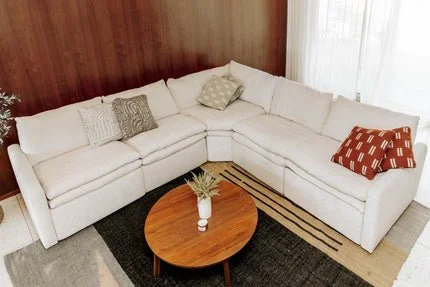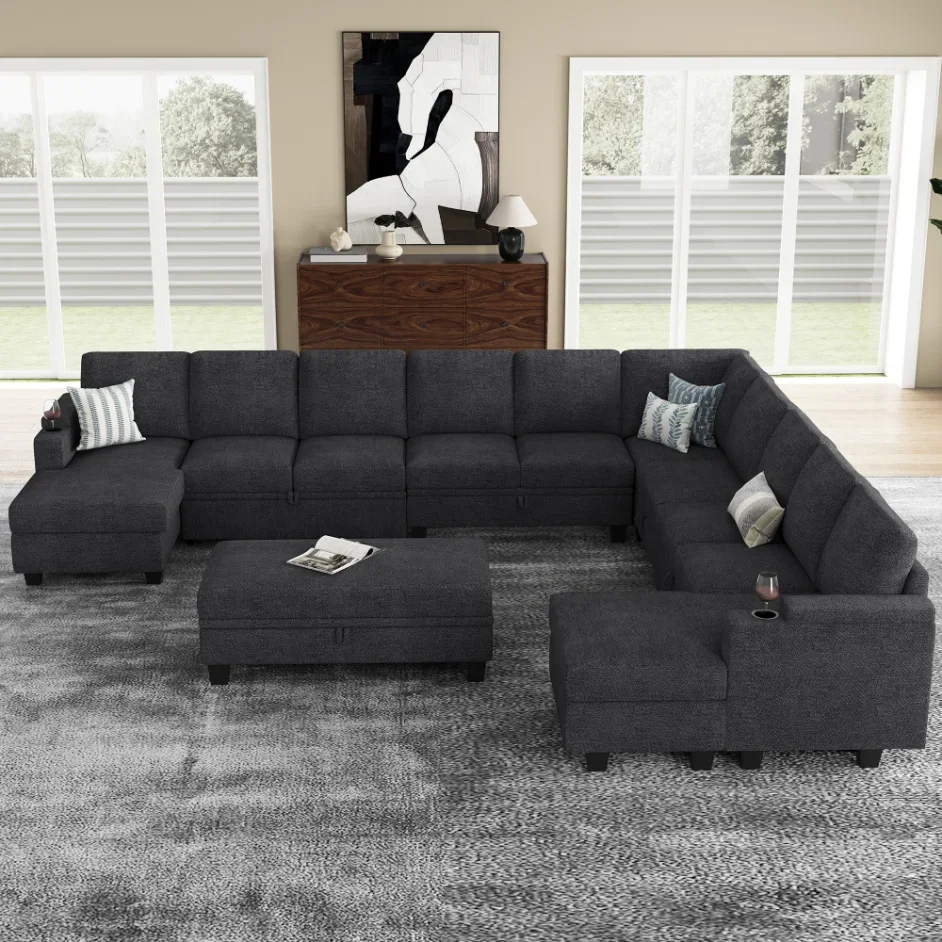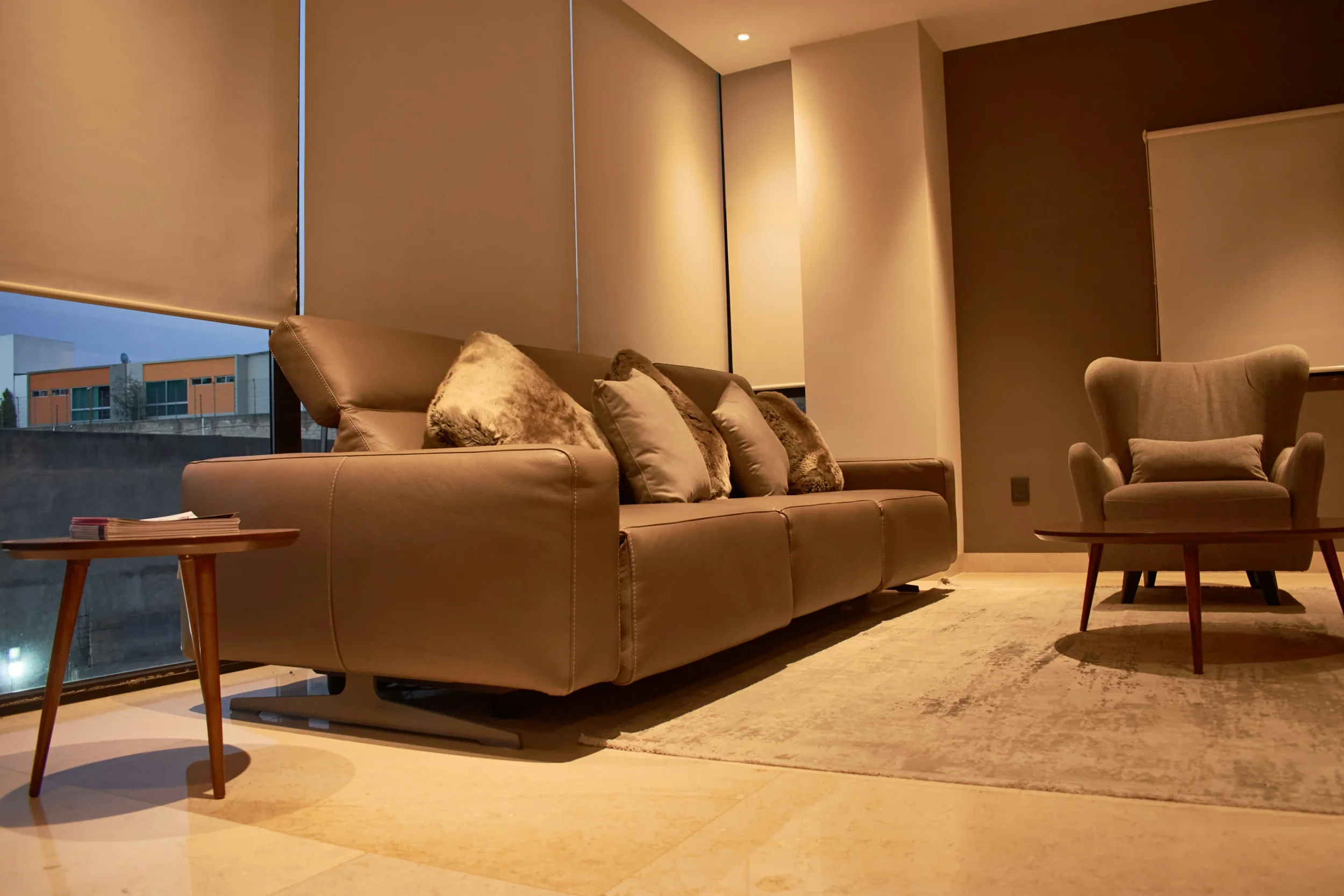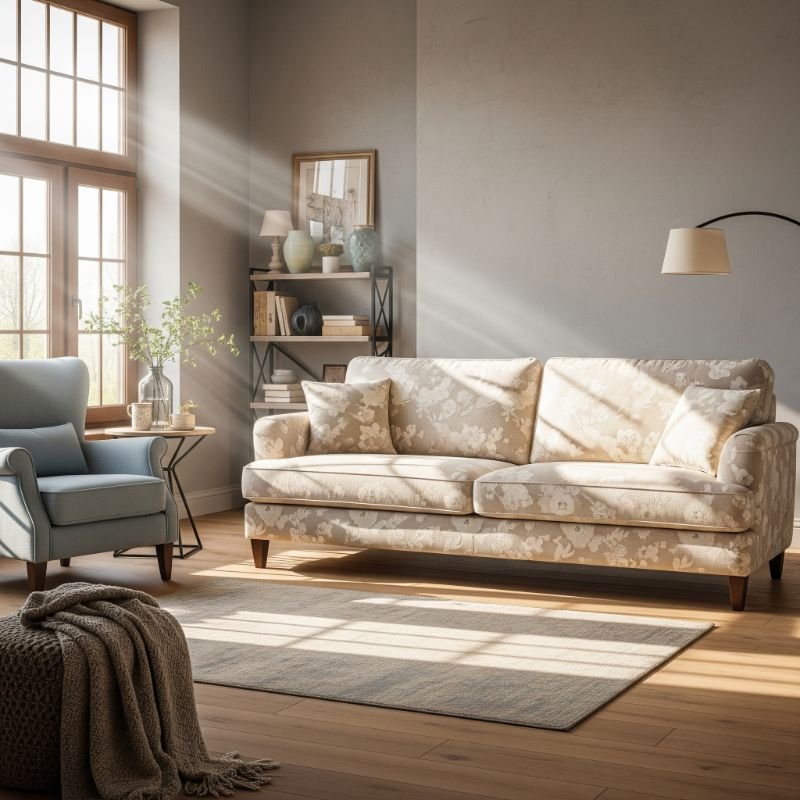What to Consider When Choosing a Modular Sofa for Your Living Space
Discover key factors to consider when choosing a modular sofa, from layout flexibility to fabric and size, to perfectly suit your living space.
Trying to find the right furniture for the ultimate living room setup can be a bit of a jigsaw puzzle to say the least. Traditional sofas tend to make you choose between a beautiful piece and a practical piece — you go for something beautiful and it's not practical or, you go for practical and it isn't beautiful.
Enter the modular sofa – a ground-breaking furniture concept that is changing what we feel is possible when it comes to living room seating. These adaptable furniture can be configured, reconfigured and even customized to fit in your special place for your modern lifestyle – no matter where you call home. Whether you live in a small apartment or a sizable home, these modular sofas can be tailored to your space to fit your room, offer plenty of seating while retaining a sense of style and even provide some comfort.
To help you out in making the perfect decision for your home, we will walk you through some of the necessities to consider: the importance of accurate space measurements, imaginative layouts, what materials to consider and how to upkeep your worktop. By the end of this guide, you'll have everything you need to choose a modular sofa that not only looks good in your space, but also is versatile in terms of how you can make it work with your changing needs.
Why Modular Sofas Are a Game-Changer for Homeowners
The history of modular sofas A modular sofa is a concept that has revolutionized home furniture and is a response to welcome changes in the 21st century home. Rather than conceptualising static, fixed-design sofas, the individual elements of this model can be freely assembled, added or removed. The best part is, because of this versatility you have the freedom to change up the layout of your living room with the seasons, for parties or when you start growing your family!
Modular living: Vs the sofa Have you ever had your mates over and been disappointed because everyone has to awkwardly face the TV as if they hate each other? Traditional sofas are typically static in dimensions and format, sometimes neither complementing nor wasting space. Modular sofas, on the other hand, enable you to maximise the full potential of your space by setting your own size, size and the set up that best suits your living space. "I need versatility when designing a living room, where a sofa will not only be for kicking back and relaxing, but will also serve as a design accessory for the space." Whether you are looking for an intimate two-seater for every day or have a large sectional that can easily reshape when entertaining, modular pieces easily conform to your needs.
In addition to providing spatial flexibility, sectional couches often provide perks in maintenance and lifespan. If something is damaged, sections can be swapped for new ones, and you end up not having to replace a whole traditional sofa. On top of that much to offer these multifunctional items often come with intelligent storage options and smart features like sofa beds and storage units built-in to the units that will help you to make the most out of your living space to find room for everything.
How to Measure Your Space for a Modular Sofa
Essential Tools and Key Dimensions
Before buying your modular sofa, get some construction essentials that will help with measuring, such as a good quality steel tape measure, graph paper, and a floor plan app such as MagicPlan or RoomScan Pro. Begin by taking measurements of the overall length and width of your room and adding information on the ceiling height and any architectural features, such as windows, radiators or built-in shelving that may impact your furniture. When measuring, make sure to account for your doorways, hallways, and stairs – these entryways will determine whether or not your selected modules can be delivered and moved into place.
Layout Tips for Maximizing Comfort and Flow
To get the best fit, here's a tip: at least 18"-24" of space to conveniently walk around your sofa arrangement. If yours is an open-plan room, let your modular sofa act as a way to partition off the space and keep natural pathways clear. In smaller rooms, look for set-ups that hug walls to give you the largest possible amount of floor space, with the center of the area left for movement. Close doors and drawers as you draw your plan to make sure you'll have enough clearance. Make a scale drawing of your room with windows and doors, and try different module arrangements before you buy.
Think about the room's focal points, regardless of whether that's a hearth, television or expansive window, and configure your sofa modules to enhance these features. Place seating at the right distance for a perfect picture and sound to stay in the larger space to keep the other people out of the way in a formal room where TV watching isn't a priority, or in any room with great seating for entertainment where a sweet spot can be created between 4-12 feet away from the TV screen. Don't forget to leave room for side tables and make sure each seat has a place for drinks and personal items.
Top Modular Sofa Configurations for Every Living Room
L-Shaped and U-Shaped Designs
The L and U shape are the most versatile and well-liked modular sofa arrangements. L-shaped configurations are ideal for corner spaces, making the most out of open space corners, and creating a natural chat spot. These layouts are especially good for open plan living spaces as they help to define different zones without the need for walls. U-shaped formations provide a cozy place to sit down for a big family or any regular host who holds great expectations in terms of the sitting capability and chat space.
Sectional Combinations and Modular Add-Ons
What makes modular sofas really shine is the multiple utility options. Top manufacturers such as CHITALIVING have transformed the market with their novel, wooden frame designs which can accommodate different modules together. Chaise lounges are available for added relaxation and reading nooks and ottoman modules can be used for dual purposes as additional seating or as footrests. Recliner modules make for theater-like lounging in any set-up, many of them also can be set up anywhere along the set-up.
Creative Arrangements for Small Spaces
Modular lounge suites can also be an ingenious solution for compact living zones to get the best of both worlds in regards to seating and space. A compact L-shaped design can be a room divider too or go for modules with under-storage to cut down on the amount of furniture. Pieces with no arms can be lined up along walls in straight rows; corner units can form cozy nooks without taking over the room. Some even transform into beds, perfect for studios or multifunctional spaces.
Choosing Materials for Comfort and Durability
The material you choose for your modular couch plays a big role in how comfortable and durable your new piece of furniture will be. High performing fabrics have been some of the most sought after for homes with kids and pets, due to superior stain resistance, and ease of cleaning, while still maintaining a sense of luxury. These engineered fabrics stand up to everyday use, resist fading, and clean easily with water based products. Linen and other natural fabrics offer superior breathability and a timeless look, but require a bit more TLC. Leather tends to cost more upfront but wears in beautifully, often looking even better with age, and it's a great investment in the long run.
The construction of the cushions is just as important when it comes to how comfortable your sofa is. Soft, high-density foam cushions and the solid-wood frame are ideal for long nights in front of the TV or hours snoozing away. Down-Filled Sofa Cushions: If you have even just a minimal couch cushion made with duck or goose down, you have experienced how cushy and luxurious down can be, but if you don't want to have to fluff cushions every time you stand, down might not be for you. Hybrid pillows, which feature a core of foam enclosed in down or fiber fill, offer the best of both worlds in terms of support and comfort. For the longest life, search for cushions that have a high-quality foam core that features a mix of several breeds of foam in multiple densities, to avoid imprints or sagging over time.
Maintaining Your Modular Sofa for Longevity
Your modular sofa will appear and remain like new when you take good care of it. And for fabric upholstery, vacuum once a week with a soft brush attachment to remove dust and debris, and be sure to get into seams and crevices. Blot spills immediately with a clean, white cloth (do not use a coloured cloth). Most performance fabric can be cleaned with mild soap or detergent and water or you may have to use solvents for cleaning natural fabric. Leather modules should be conditioned every 3 months using an appropriate leather conditioner to help avoid cracking and to keep your leather feeling soft and supple.
Rotate the seat and back modules every 3-4 months or so, shifting worn modules from high-use areas to lesser-used places. This is especially important for corners and areas that are popular for sitting. Periodically inspect and tighten the installed connection formwork of the formwork elements, in order to keep its form stability and to prevent gaps. Protect against fabric fading and leather discoloration by keeping your sofa out of direct sunlight, and arm covers or throws in high-traffic spots will guard against wear. When you move the modules, always lift instead of dragging them, to avoid scratching the furniture and flooring.
Choosing the Right Modular Sofa for Your Home
Sectional sofas are the ideal seating solution for modern homes. Unbeatable variety You can design all the seating you need for every area, all of it convertible thanks to its compatibility, and all of it as flexible as you want for every way of life. From squeezing into small apartments to converting huge spaces into entertainment zones, these awesome couches are solutions that no normal sofa can offer.
Keep in mind that choosing the right modular sofa begins with proper space measurement and thoughtful configuration planning. Think about your room's dimensions, traffic patterns and how you plan to use the space every day. Select items that fit your lifestyle and the amount of maintenance you're willing to take on; and consider the flexibility to rearrange your set-up over time as your tastes change.
Ready to transform your living space? Start planning your ideal modular sofa layout today, and create a comfortable, adaptable seating solution that will serve you beautifully for years to come.















